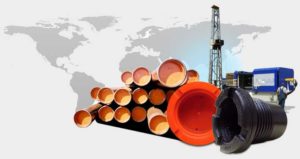The price of water has been rising throughout the world. This is mainly attributed to the cost differentials of supplying water between western and developing nations. Providing access to clean water requires the construction as well as maintenance of a detailed system that not only disposes but also treats dirty water. These services are financially intensive and constitute some of the most expensive public services. Developing nations are suffering the most in this regard and the prices of water in these countries are higher than in western nations. Typically, there are insufficient funds to develop infrastructure such as dams, boreholes, water well drill pipe thread protectors, and other equipment to deal with the low-standard sanitation systems in place.
Asia and Africa have the highest urbanization rates and the continued growth of cities has not kept up with the relative increases in population. This has put even more pressure on their existing water supply, leaving many people, particularly slum dwellers, without access to basic sanitation and safe drinking water.
Many of those without house connections for water supply in developing countries are forced to rely on local vendors for their water. This raises the price by about 100 times more expensive than if water was to be supplied to their houses.
For over two decades, the complete or partial privatization of public waterworks has been put forward as a viable solution to deal with the rising costs of supplying clean water. In the 1980s, many third world countries were granted loans by the World Bank and International Monetary Fund to privatize water supply. As many of these projects for the development of water supply were selective and the price of water became unaffordable for large portions of the population, they were called off due to public pressure.
Developed nations have rather significant variations in the price of water. These differences are dependent on capital costs as well as the costs of cleaning water in the respective countries. Copenhagen has the most expensive water in the world whereas Ireland is relatively cheap as the costs of water delivery is covered by property taxes. Canada boasts the lowest costs whereas in Germany, the cost is up to five times higher.
Various environmental and international organizations, including the United Nations, have set goals to improve environmental sustainability and reduce the number of people without sustainable access to safe drinking water and basic sanitation. However, it is the mandate of the countries themselves to put measures in place to reduce the price of water. The main idea is for all countries to increase their efforts and investments to meet set targets.
According to several surveys, the price of water continues to rise again as population grows and the demand for water increases. In dry regions where scarcity is an issue, the costs of supplying clean water push the prices even higher.There is more to be done to be at par with the continued growth in population, climate change and increased urbanization to ensure more people around the world not only have access to clean drinking water but at a reasonable price.
The price of water varies throughout the world and supplying water to areas where it is scarce puts pressure on those countries. Contact MSI to help with the needs of supplying water today.




